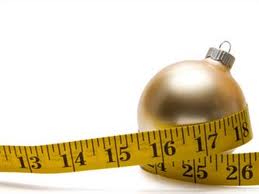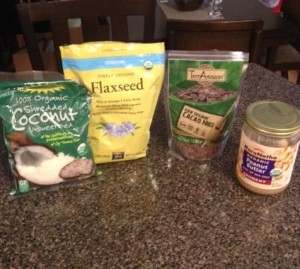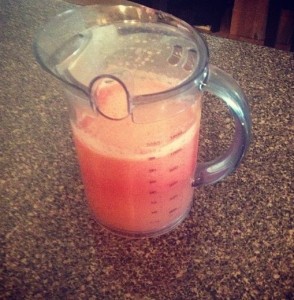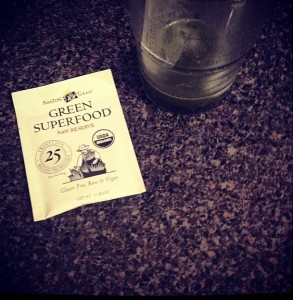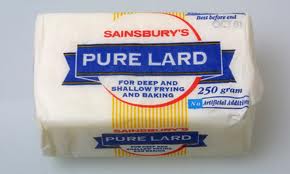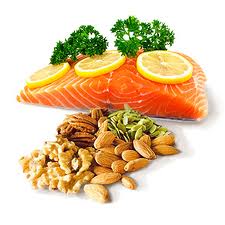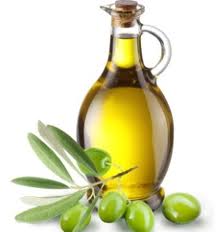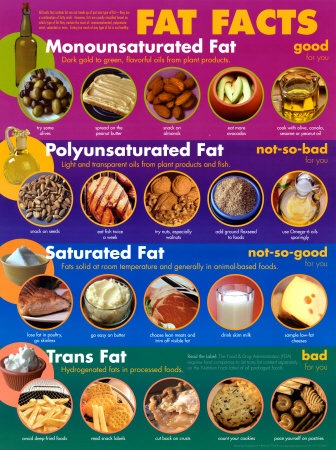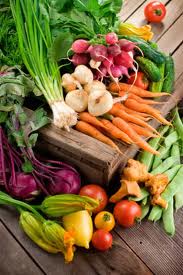Tag: diet
Cleaning up my diet
Over the last four days (since Monday) I have cleaned up my diet. Again. I already was eating very healthy but the scale was not budging. And either was the way I felt in my clothes. If anything, I had been slowly gaining weight over the last year. As I mentioned before in my “About Me” section, I lost 25 lbs. seven years ago. The lowest my weight was is 115lbs, which for me is impossible to maintain and didn’t quite look healthy. So in the years after that I have fluctuated 10 lbs or more. But lately, for about the last year, I have found that no matter how much I restricted my diet and calories the old ways were not working. I have heard a lot of talk about the “Paleo” diet and eating a diet rich in quality sources of clean foods including; abundant vegetables, meat, dairy from whole organic or unpasteurized raw milk, fruits, seeds and nuts, no added sugars, no grains or legumes, and absolutely no processed foods or fast food. I didn’t like the idea of eliminating a food group like grains at all. Mostly, because it isn’t what I learned in school, but after reading up on the surprising negative affects grains can have on our body, I decided this is something I should give a try.
I thought at first that it was an Atkins style diet, but it definitely is not. From what I remember of the Atkins, it encouraged cheeses and meats without telling the dieter to eat the cleanest sources of these and it also didn’t allow much vegetables or any carbohydrates. So back to the Whole foods/Paleo/Clean whatever you want to call it diet. I stocked up on organic vegetables to make my favorite African peanut stew, yes peanut stew! It’s so good. I also bought fruits to juice and cacao nibs, raw coconut, ground flax-seed, and sugar free almond milk to make to my morning clean shake. I should add that although I have been limiting sugar, I still added a little honey to my shake and green tea, that I won’t give up and I want to enjoy eating because I love it so much. I also bought Raw Reserve’s SuperFoods Green packets which are full of probiotics and sea algae in powder form. Sounds delicious, I know. I mix it with my juice, plug my nose and drink it up. In addition, I have been bringing food home from work. I bring wild salmon patties of which I order two of, and I get our Big Salad which has mixed greens, olives, fennel, walnuts, tomato, cucumber, and sometimes I add avocado or tuna. It comes with a sherry vinaigrette dressing.
So without giving up fats or meat and adding a few super foods, I have lost 2 lbs in four days. That is huge for me since most of the time I go weeks thinking I am eating all the right foods and watching calories but the scale does not change one bit. And giving up the grains hasn’t been as hard as I thought it would be. Maybe because I am still getting plenty of fats from clean meats, nuts, and olive oil to satiate me. So it turns out even someone with a dietetics degree can have a lot to learn still. And I love to continue learning and proving old theories wrong. I have not incorporated my exercise regime while I started this way of eating because I wanted to be certain the results were coming from the food and not the workout. I can’t really say if I feel different energy-wise because it is still so early. But it is nice after not even a week on this way of eating that I may finally have found what works for my body. As much as I hate to admit it, my body is not the same as it was seven years ago, I am now approaching 30 (Yikes) so I have to make tweaks to my diet as the years pass.
I will continue to update on my progress and please send me your experiences with what works best for you. I have family coming in town this weekend so I might not eat as well as I would like. I already planned a french toast bake for breakfast and Italian beef dinner while they are here. Luckily we bought most the ingredients from whole and organic sources. But heck, we have to indulge once in a while!
Breaking Down Fat
Fat is essential and serves many purposes in our bodies. The difficult task for many people is deciphering between which fats are the good ones to enjoy in your diet and which ones should be limited. Fat provides energy, insulates the body to maintain temperature, pads our internal organs to prevent internal injury while doing recreational hobbies like riding a bike, and is also vital in brain function. Fat is necessary to absorb the fat soluble vitamins A, D,E and K. Having even small amounts of healthy fat in the diet can contribute greatly to a feeling of satiety, making you feel full. I hope this week’s article will make breaking down the fat in your diet a little easier and help you feel more empowered when choosing food items for your diet.
So just what are the differences between all these fats? We will start with what saturated and unsaturated fats are. To put it simply, the more saturated a fat is the more firmer it will be at room temperature, the more unsaturated a fat is the more liquid it will be at room temperature. Animal fats found in red meat tend to be the most saturated, chicken is somewhere in the middle and vegetable, flower and nut oils are the least saturated. Luckily, you can usually distinguish these fats just by looking at them. Imagine lard’s texture and density compared with olive oil and it’s liquid-y, runny texture. Saturated fat increases LDL (think lousy) cholesterol and unsaturated fats increase HDL (think healthy) cholesterol. A higher LDL is linked with type two diabetes and cardiovascular disease. This is because LDL increases plaque in your arteries which decreases blood flow to your heart by clogging arteries and may also be linked to heart attacks and strokes. I am not telling you to never enjoy a juicy hamburger or steer clear of anything with cheese, these foods have their place too. Just try to save them for once in a while and enjoy the best grass fed beef burger and the less processed cheeses when you do have them. After all, you deserve the best when you do indulge!
Now we will discuss the different fats in these two categories
Trans fats– People are becoming more aware of trans fats and some restaurants even have standards for how much trans fat they are allowed to use. The best way to regulate this for yourself is knowing what trans fats are and what key words to look for when shopping. Trans fats are made by pumping hydrogen into unsaturated fatty acids to make them more solid at room temperature and therefor preserving the food item. This is a factory made process, not one from nature, although some dairy products have very small amounts of naturally occurring trans fat . Once the oil has been hydrogenated it loses it’s health benefits. The composition of a trans-fatty acid is almost identical to a saturated fat and has the same harmful effects on our health. They raise LDL just like a saturated fat because they now are a saturated fat. Trans fats are largely found in fried foods like doughnuts and fried chicken, and also in margarine and packaged foods. Always look on the ingredients label for the words “hydrogenated” or ” partially hydrogenated”. These words indicate Trans-Fat.
Now onto the fats with benefits!
Polyunsaturated Fats– Essential fatty acids are fatty acids that the body needs but can not create itself, these are fats that we must get by including foods containing them in our diet. These two types are linoleic and linolenic acid. These fatty acids help make up the materials to carry out hormone-like actions in the body, from muscle contraction and relaxation to blood clot formation. When we have deficiencies in these essential fatty acids it can take a serious toll on our organs and cause disorders to the affected areas. One of the best sources for polyunsaturated fats is fish or fish oil. Choose fish that is wild when you can (instead of farmed) because it contains far less toxins and environmental pollutants and more of the heart and brain healthy omega 3 fatty acids. Other sources rich in polyunsaturated fats include, sunflower seeds, walnuts, chia seeds, and flax seed. You can sprinkle these on your morning oatmeal or add to salads to reap the benefits.
Monounsaturated fats – These receive a gold star when it comes to healthy fats to enjoy in your diet. With only one point of saturation, these are the least saturated of all the fats. Mono unsaturated fats are found in avocado, olives and olive oil, and almonds to name a few.
*Fresh and Fit note*
Remember, While poly and mono unsaturated fats have an impressive list of health benefits and should be a part of your daily diet, they are higher in calories, as 1 gram of any fat still contains 9 calories. So remember to look at serving sizes and use oils sparingly.
There is a product called the Misto I found and bought last Christmas which mists oil onto foods and pans creating a smaller amount on the surface and therefore using a smaller amount of calories. You can even use a spray bottle for oils.
The Detox debate
The word “detox” is something that gets misused and misinterpreted very often. Especially lately. The words “cleanse” and ” purify” are also thrown around. From detox teas to juice fasts to elixirs made of cayenne pepper and maple syrup claiming to widdle your waist and rid your body of toxins. It is a hot button word grabbing many people’s attention and, in my opinion, used to scam people into believing they are taking something that will magically make them feel better. So I was very happy when my latest issue of Food and Nutrition Magazine came in my mailbox with an article covering this exact topic. I will share with you the key points of the article in this week’s blog.
First off, detoxification is a biochemical process that transforms non-water soluble toxins into water soluble compounds that can then be excreted in urine, sweat, bile, or stool. For many people with certain conditions the process of detoxing can be extremely helpful in healing the body. Most detoxification occurs in the liver but can also include the gastrointestinal tract, lymphatic system, urinary system, lungs and respiratory, and the skin. It is believed amongst the dietetic community that exposure to toxins from the environment accumulate in the body and as a result of the body’s own detox system being unable to keep up with ridding those compounds results in “bio accumulation.”
To help reduce exposure to toxins, I have broken down the basics in eliminating toxins from your diet and adding foods that will help your body safely eliminate toxins.
1. Choose organic produce when available. If unavailable, ALWAYS wash your produce.
2. Choose organic meat when available. Toxins accumulate in animals the same as they do in humans. Especially with the use of hormones and antibiotics added to our dairy, livestock and poultry.
The foods below are known to have detoxification properties in the body. The diet is based on whole foods, adequate fiber, and water.
Organic Fruits and vegetables– Contribute a variety of phytochemicals which promote detoxification enzymes.
Cruciferous vegetables– Compounds in Cabbage, Broccoli, Kale, Brussels sprouts known as crucifers help to promote detoxification in the liver.
Green Tea– Contains high levels of antioxidants known as polyphenols.
Water– Drink lots of it! Water promotes detoxification in almost every body system. It plays a key role in hydration which is absolutely necessary to properly detox. Water is responsible for excreting toxins from the body.
Fibrous foods– Soluble and insoluble fiber work hand to hand to bind to toxins and remove them from the body by way of stool. Flax seeds, oatmeal, brown rice, and beans are great sources.
Probiotics– These healthy and helpful bacteria are found in fermented foods like yogurt and protect the intestines by inhibiting the growth of bad bacteria which produce ammonia and other toxins.
Eggs, Garlic, and Onion– Contain the compound sulfur, known to be ” the master detoxifier”
To close up this weeks blog I would like to suggest that detoxing the body and eating clean can and should be a way of life, not just a fast we do for _X_ amount of days and then go on filling our bodies with toxins. I hope this article helped make the detox debate a little clearer for you. Now you are empowered to know the difference between good nutrition and good marketing.
For more information on detox diets click here
To read the Food and Nutrition article click here


